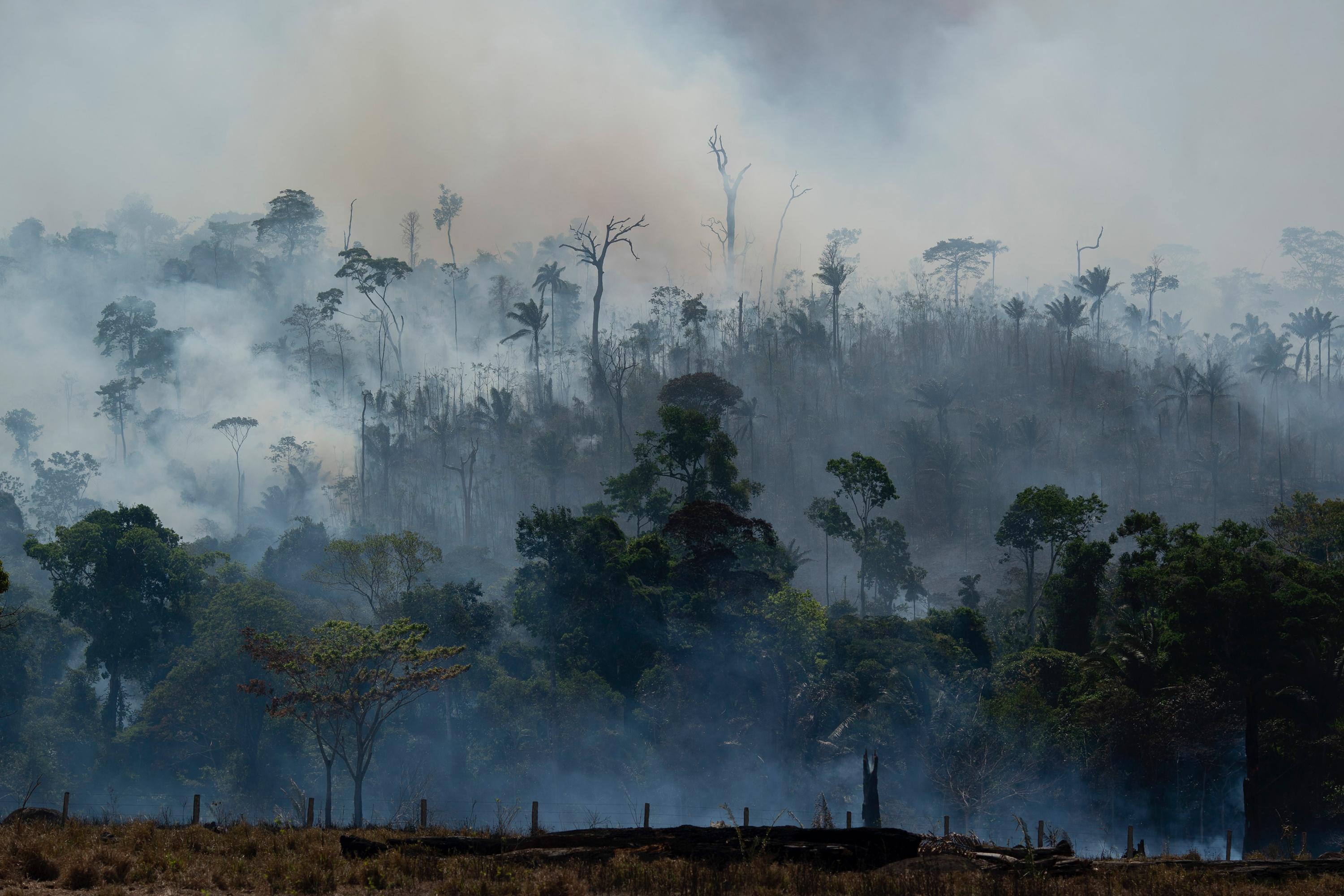
Images of the Amazon rainforest blanketed in smoke and up in flames captured the attention and the anger of the internet a week ago.
That includes Jennifer Balch, the director of Earth Lab at CU Boulder and longtime monitor of the Amazon. She described the fires as a mix of planned burns, some deforestation fires — ones “intended to convert lands for pasture” — and maintenance fires — ones rejuvenating pasture grasses. Some of those planned burns have jumped to become “escaped” fires, burning through intact sections of the Amazon.
While “this year is particularly bad,” Balch also said the fire season could fit into long-term fire activity trends. What’s really changed is the switch from unplanned to planned fires.
“We're seeing a lot of intentional land use fires, almost kind of a pent up need and demand for using the land for crops and for cattle pastures,” Balch said. “And so given the shift in the political situation in Brazil, there's been a huge increase in using fire to deforest lands because they're more valuable without the forests that are on them, unfortunately.”
Jair Bolsonaro became Brazil’s president at the start of 2019 and has rolled back environmental protections.
While planned burns can be healthy for forests like those in Colorado, that’s not the case for rainforests like the Amazon.
“They haven't really experienced fire across their evolutionary history in the same way our forests have,” Balch said. “Fires that happen in the Amazon can actually be incredibly damaging because there are no trees that have super thick bark and adaptations to fire, like our Ponderosa pine forests for example.”
Over more than a decade of experimentation, Balch has become very knowledgeable about the damage fire can do to the Brazilian forest.
“I participated in a large-scale burn experiment where we experimentally burned different plots of Amazon forests to see what was the actual tipping point of this forest system,” Balch said.
That meant burning some plots once a year, others every three years and sparing some as controls in a decade-long experiment. The tipping point they found? Loss of 60 percent of trees.
“We can reach that tipping point with fire and drought very, very quickly,” Balch said. “We had the influx of new grasses, and essentially, could convert that forest to a grassland system in less than a decade.”
“The Amazon forest can quickly convert to something very different than it is. And it's not a projection out to 2100 about how the forests are going to change, this is something that can happen right now,” she said.
Despite the stakes, Balch said she remains an optimist. She wants international groups of scientists to come together to solve the problem, applying the lessons Americans should have after the nation’s own fire-powered frontier expansion.
“Fire was a huge part of our frontier expansion, and so it's very unfair for us to point a finger,” she said. “Now Brazil's frontier's moving northwestward, and fire is a critical tool in sustaining and achieving progress. And so the question that we have is how can we do this better? How can we create sustainable development? How can we create and invest in carbon markets that really do pay for the carbon to stay in the forests? How can we do those things together and collectively as a global community rather than fighting about it?”









